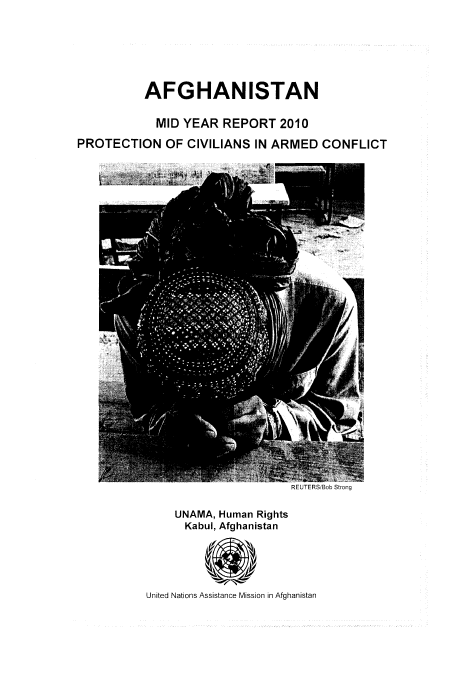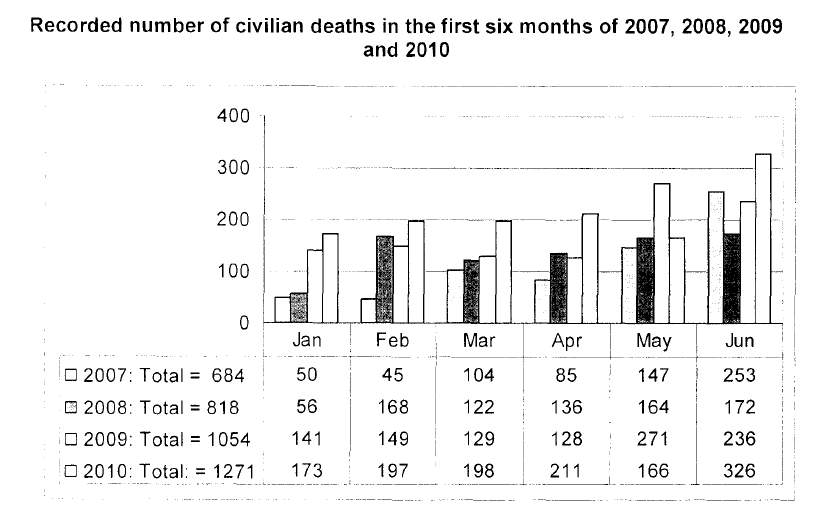 MID YEAR REPORT 2010
MID YEAR REPORT 2010
PROTECTION OF CIVILIANS IN ARMED CONFLICT
- 46 pages
- August 2010
Executive Summary
The human cost of the armed conflict in Afghanistan is escalating in 2010. In the first six months of the year civilian casualties – including deaths and injuries of civilians – increased by 31 per cent over the same period in 2009. Three quarters of all civilian casualties were linked to Anti-Government Elements (AGEs), an increase of 53 per cent from 2009. At the same time, civilian casualties attributed to Pro-Government Forces (PGF) decreased by 30 per cent compared to the first half of 2009.
UNAMA Human Rights (HR) highlights two critical developments that increased harm to
civilians in 2010. First, the number of civilians assassinated and executed by AGEs rose
dramatically and second, AGEs used a greater number of larger and more sophisticated
improvised explosive devices (IEDs) throughout the country. The devastating human
impact of these tactics underscores that nine years into the conflict, measures to protect
Afghan civilians effectively and to minimize the impact of the conflict on basic human
rights are more urgent than ever.Between 01 January and 30 June 2010, UNAMA HR documented 3,268 civilian
casualties including 1,271 deaths and 1,997 injuries. 1 AGEs were responsible for the
deaths and injuries of 2,477 civilians or 76 per cent of the total number of civilian
casualties for this period. Suicide and lED attacks caused the most civilian casualties
attributed to AGEs including 557 deaths (61 per cent of civilian deaths attributed to
AGEs) and 1,137 injuries (73 per cent of civilian injuries attributed to AGEs).
In the same period, UNAMA HR recorded 386 civilian casualties (12 per cent of total
civilian casualties) linked to PGF, down 30 per cent from the first six months of 2009.
Aerial attacks caused the largest number of civilian casualties attributed to PGF
including 69 deaths (31 per cent of civilian deaths attributed to PGF) and 45 injuries (20
per cent of civilian injuries attributed to PGF).As civilian casualties rose in the first half of 2010, women and children made up a
greater proportion of those killed and injured than in 2009. Women and children
experienced an extreme lack of protection in conflict-affected areas along with
widespread violation of their basic human rights. From January to June 2010, women
casualties increased by six per cent and child casualties leapt by 55 per cent from 2009.
UNAMA HR found that 120 women were killed and 151 injured while 176 children were
killed and 389 injured as result of the armed conflict. IEDs and suicide attacks by AGEs
caused the most women and children casualties in the first half of 2010.…

